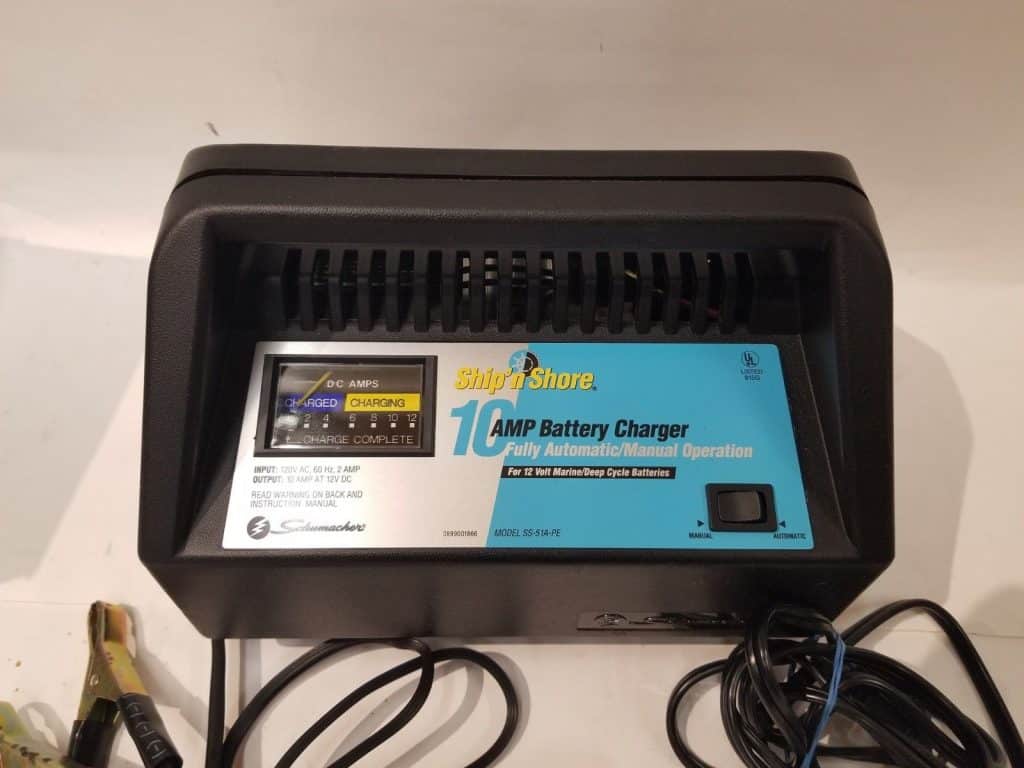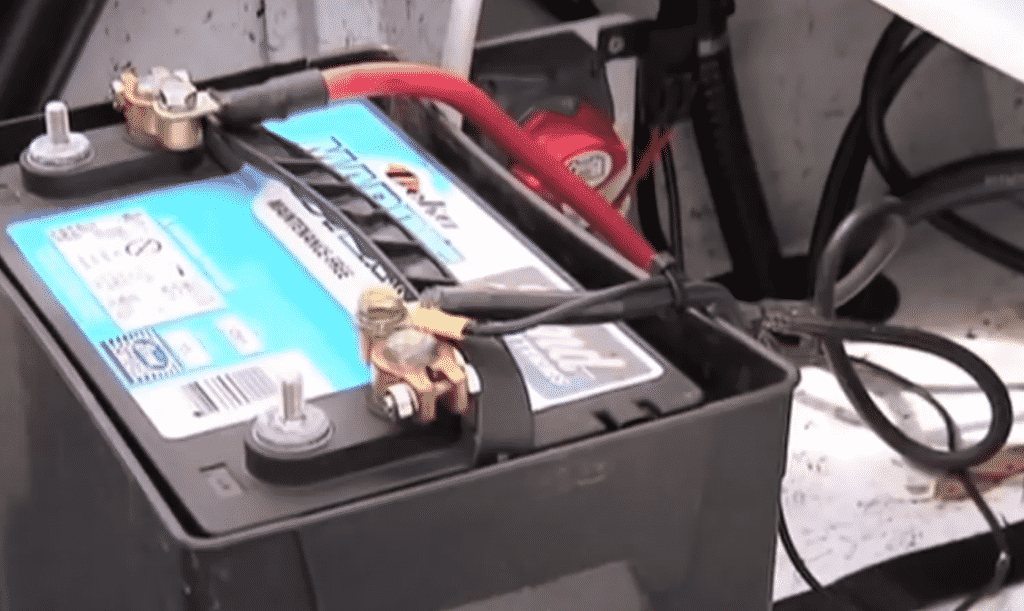
10 amps are needed for Deep Cycle Marine Batteries. Trickle charges dont deliver enough juice to charge up a deep cycle battery.

Use a smart charger to avoid overcharging.
Should you trickle charge a deep cycle battery. No A car battery charger on trickle charge is too low to do the job. 10 amps are needed for Deep Cycle Marine Batteries. They have to be overcharged to 106.
So make sure you choose the correct charger for your battery. One thing that most deep cycle batteries do require is a maintenance or float charge because boats and equipment that have deep cycle batteries are often stored for several months and their batteries lose power during storage. You want a battery charger that provides a 2 amp float charge and not one that provides a 2 amp trickle charge.
When the deep cycle battery is of no use leave it on a trickle charge for the better outcome. Dont charge your battery even if it holds on more than 60 charge. From the aforementioned methods it is crystal clear how to charge a deep cycle battery in an authentic way.
A trickle battery charger will charge a battery at the same rate as the batterys self-discharge which is how quickly a batterys capacity falls during storage. Many trickle chargers will output the same voltage and current regardless of the needs of the battery to reach 100 capacity which can lead to battery damage if substantially overcharged. Ive removed my deep cycle trailer battery for winter storage in the garage.
Im using a Nextool Battery Charger Maintainer 261-9678 with an output of 12V DC 08A to maintain it. The charger has a flashing green light to indicate a greater than 80 charge and a solid green light to indicate full charge. Ive had the battery charging for several days and the charger never goes.
I thought trickle charge is usually considered to be 10 of the batterys Amp Hour rating or less. So Id go with six or 2 but monitor the state of charge If the battery is holding its charge. GOOD if not IF the voltage seems to be dropping Kick it up.
Check like the 1st of every month. If you are USING the battery. There are basically two types of chargers that are generally used to charge batteries.
Also known as a float charger. This type of charger will NOT be able to charge you a deep cycle battery because its main purpose is to keep your battery topped off. Can you overcharge a deep cycle battery.
Yes this is possible with any battery if you are using an older style simple charger. Use a smart charger to avoid overcharging. Is it OK to trickle charge a deep cycle battery.
Trickle charging is the correct way to charge a deep cycle battery. How to tell if a deep cycle battery is bad. Can I charge a deep cycle battery with a regular charger.
Yes you can charge the deep cycle battery with the regular charger. Because there is no big difference between the deep cycle battery charger and the regular charger the deep cycle battery charger can charge it in a small amount for a long time. A deep phase charger charges a battery with a slow and steady current.
While a deep charger pushes its charge to its full limit a regular charger does more like a quick-charger of a smartphone. So which one should you buy when it comes to deep cycle vs regular battery charger. Types of Deep Cycle Chargers 1.
Trickle charges dont deliver enough juice to charge up a deep cycle battery. At least 10-15 amps is needed for the job. Do not buy a trickle charger to attempt this.
There are six simple steps in testing a deep cycle battery. Inspect recharge remove surface charge measure the state-of-charge load test and recharge. If you have a non-sealed battery it is highly recommended that you use a good quality temperature compensated hydrometer.
These can be purchased at an auto parts store for between 5 and 20. The correct fully charged specific gravity of your 6-volt deep cycle battery is. 1265 will vary dependent on battery age condition and ambient temperature Battery life is directly related to keeping your batteries fully charged.
Batteries are more resistant to degradation and freezing when they are fully charged. It might take these chargers several hours to complete the powering process. In contrast trickle chargers allow a small amount of electricity to flow into the battery.
By reducing the power amount youre able to slowly charge a battery over several days. This slow process is perfect for these applications including. The process for charging a deep cycle battery is quite different from a conventional battery.
For one thing youll need to water the battery. If youre not sure how do to this we highly recommend that you read the instructions that came with the battery you should read them regardless. Deep cycle batteries will self-discharge if left without a load over an extended period of time and storing in an uncharged state can cause sulfation and damage performance.
To help you get the most out of your 12 volt deep cycle battery and understand more about the charging process weve put together this deep cycle battery charging guide. Never ever use inappropriate chargers for charging your deep cycle battery because it may harm the battery in several ways. Also do not use a trickle charger because it keeps on charging the battery even after its fully charged and you must be knowing that overcharging is also harmful to a deep cycle battery.
Deep cycle batteries prefer to be discharged and charged between 20-50 regularly to prevent sulphation on the plates. Sulphation prevents the internal chemical reaction producing energy. So with your option 3 the BP35 system will keep your batteries on float charge but I would recommend turning on your lights every couple of months to reduce the capacity down.
You can trickle charge 138V 1 AMP max typically deep cycle batteries but as stated it will take some time. In fact the 1 cause of lead acid battery failure is allowing them to sit unused. The plates build up lead sulfate and the battery is toast.
So technically no battery charge will be lost overall. How Trickle Charging Works. The two types of batteries found in an RV.
The source of the most power is the deep cycle battery powering most of the appliances in the RV while the other type of battery is the SLI Starting Lighting Ignition known as the starting battery. The battery will start charging at anything 138 volts. A true trickle charger on the other hand will constantly apply the faintest of charges to your battery whether the battery wants to accept the charge or not.
Even though you may not be able to hear it your battery is experiencing electrolysis during a Trickle charge. Set your battery charger to a slow or trickle charge and select whether you are charging a 6 12 or 24 volt deep cycle battery. If your battery charger has the option to set the voltage for the charge set it to 20 percent of the rated amp per hour rate of the battery you are charging.